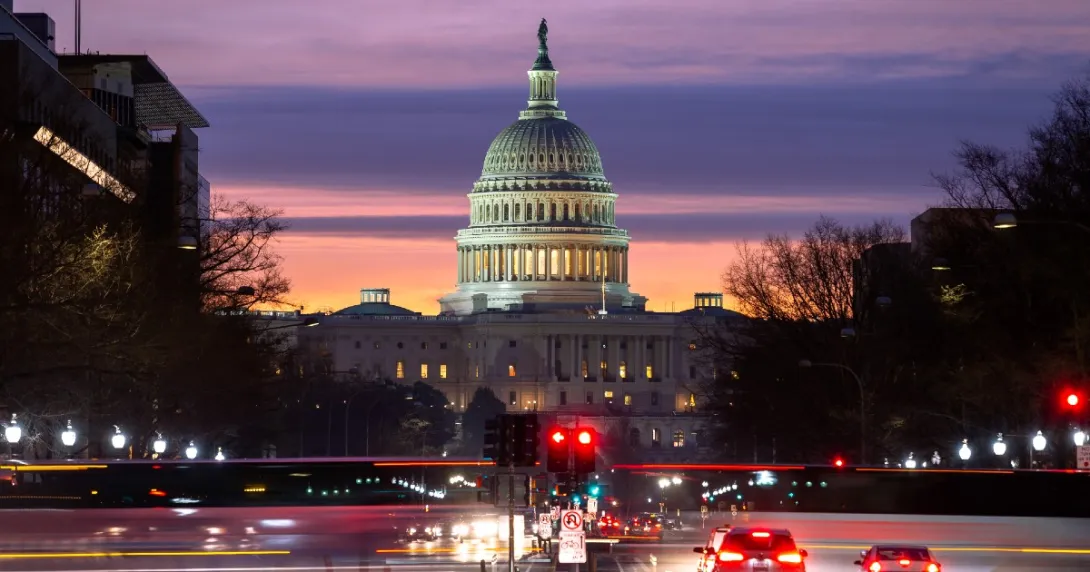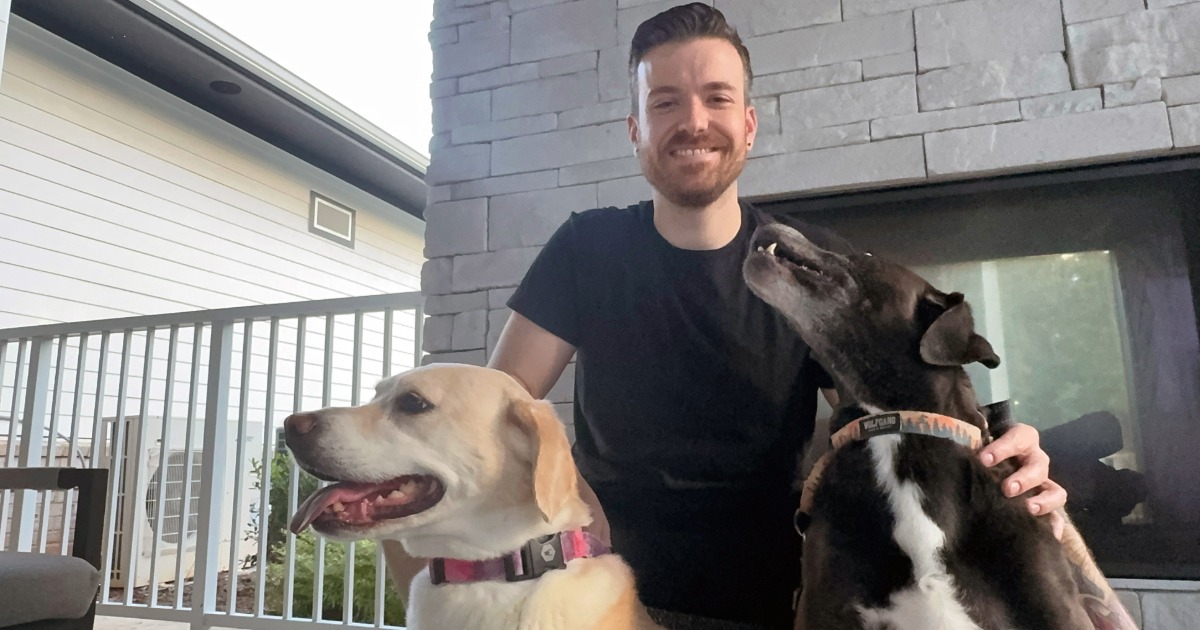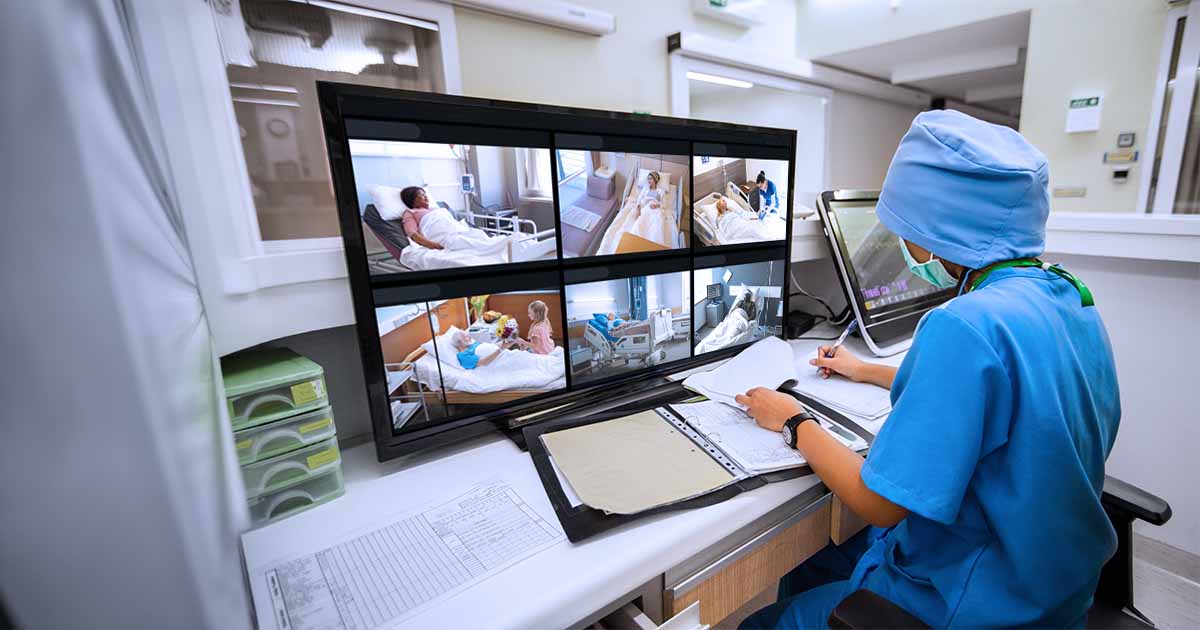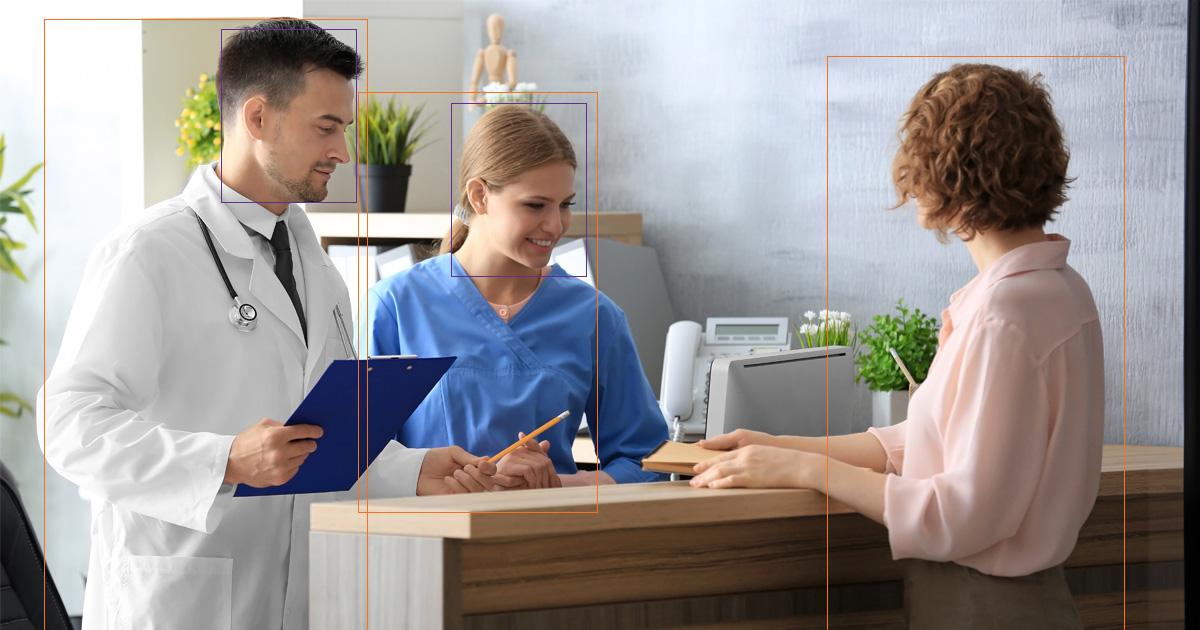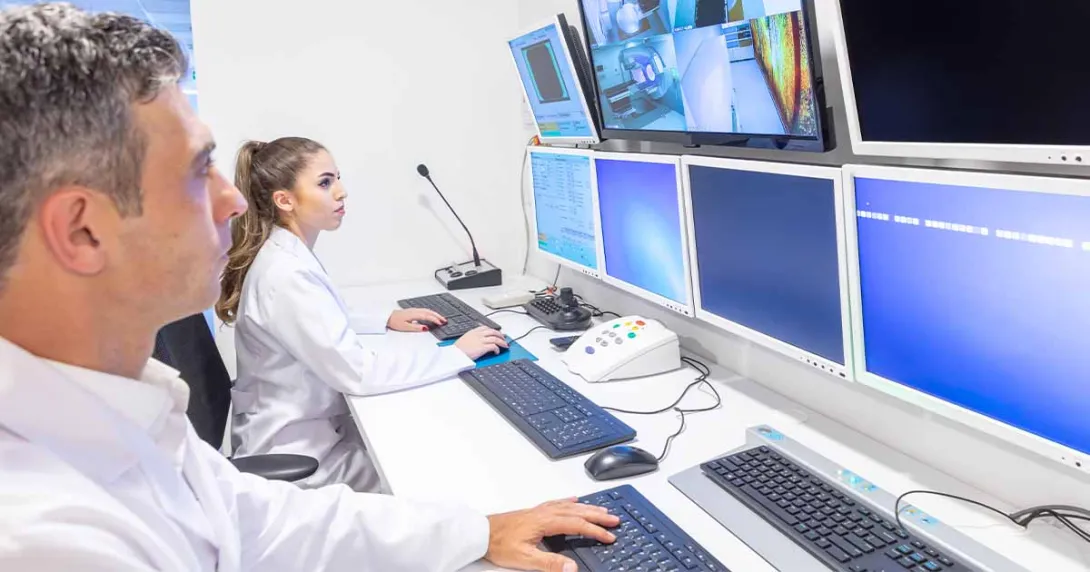
Healthcare facilities are increasingly turning to advanced surveillance technologies to bolster protection and improve operational visibility. With healthcare surveillance deployments growing more creative and elaborate, three trends warrant heightened consideration: advanced AI analytics, regulatory compliance and smart camera multi-use operation.
Being smart about AI
Artificial intelligence (AI) can be an overused term, with many people often throwing out blanket statements like “intelligent AI.” But it’s really what a facility does with AI technology that matters: the specific applications that can be supported and the metrics derived.
More specifically, intelligent analytics can help hospitals solve specific problems. Whether you’re a large hospital or a regional one, the big question today is: what’s right for you? What can AI do for you, and also what can’t it do? Hospitals need to figure this out.
Hospitals are now leaning toward on-camera edge AI analytics. Most modern edge analytics are faster, more robust and don’t require expensive licensing, which lowers the total cost of ownership for cost-conscious hospitals.
Automation through analytics
Healthcare operations must balance improving patient care and finding new efficiencies. Safety and security will always be at the top of any priority list, but not far behind is automation that frees staff from many time-consuming manual tasks so they can concentrate on higher-value, patient-focused activities.
Hospitals are complementing their cameras’ security monitoring performance with enhanced data-gathering capabilities combining intelligent audio/video analytics and AI. The result is targeted object detection, ambient keyword detection, characteristics extraction and object classification, which can save time for hospital security teams by speeding forensic searches. When an incident occurs, locating a person of interest can take a matter of minutes instead of requiring staff to sift through hundreds of camera streams for hours.
With resource and in-house security teams stretched thin, facilities need automated alerts that notify security personnel or a command center when a certain behavior or activity occurs based on pre-set criteria. For example, staff need to know as soon as possible when a person falls in a hallway or a bed blocks an exit.
The combination of IP cameras and analytics helps security professionals control access and monitor hallways, entrances, exits and exterior parking lots. Identifying doors visitors can use to enter and exit a building determines where to place cameras.
More hospitals are feeding analytics into a business intelligence (BI) software application. They can determine how many people entered through a specific door on a particular day, how many people are in line at the emergency room or how many people drove the wrong way in front of the main entrance. These applications can deliver granular data to medical teams such as how often a patient tries to get out of bed or how long a tray of food has been in front of a patient.
Using data for operational insights
While choosing the right camera and analytics package is important, these tools are only effective if used properly. Security cameras have evolved from being passive tools to becoming proactive business solutions providing rich, actionable data that can be visualized and used for operations or planning.
Machine learning, AI and advanced video analytics have matured to much higher levels of accuracy and precision, and multiple applications leverage analytics to help hospitals solve problems and generate return on investment.
Maintaining compliance
Healthcare facilities must keep pace with healthcare regulatory requirements and standards bodies, notably the Joint Commission, a non-profit organization that accredits and certifies healthcare organizations and programs in the United States. The Joint Commission evaluates organizations against performance standards to ensure they provide safe and effective care, and its accreditation serves as a mark of quality and patient safety.
Other regulatory bodies include Centers for Medicare & Medicaid Services (CMS), which represents the federal regulatory aspects of healthcare, and DNV, which offers accreditation and certification services for healthcare organizations.
Hospitals receive federal funding based on patient volume, patient satisfaction scores and other metrics. If a hospital gets high scores on audits, the results of which are publicly available, they may receive additional funding, while poor scores may lead to less funding. Gaining insights from analytics can help a hospital pass these audits, for example, by alerting them of unsafe conditions, documenting drug diversion or pre-emptively reducing slip-and-falls.
Hospitals have identified patient falls as their top adverse event, with more than 1 million falls reported yearly at an average of 11.5 per hospital per month. Given that at least 33% of all patient falls are preventable, the Joint Commission requires every hospital to have a fall-reduction program to help decrease the number of these incidents.
By deploying cameras with advanced analytics capabilities, healthcare staff can maintain situational awareness of everything going on within their facility. Beyond safety, care and efficiency, installing the right surveillance infrastructure can be the right prescription for improving patient care, remotely monitoring sensitive areas and maintaining a safe and welcoming public environment for staff, patients and visitors.


